For safe bouncing, your child needs properly fitted protective gear. Start with non-slip socks or bare feet for better grip, along with a multi-impact helmet meeting ASTM F1492 standards. Add knee and elbow pads to prevent scrapes during falls. Dress kids in comfortable, non-restrictive clothing without dangling parts that could catch. Always inspect gear regularly for damage and adjust equipment based on your child’s age, skill level, and seasonal conditions. Proper protection makes every bounce safer.
What Protective Equipment Do Kids Need For Bouncing?
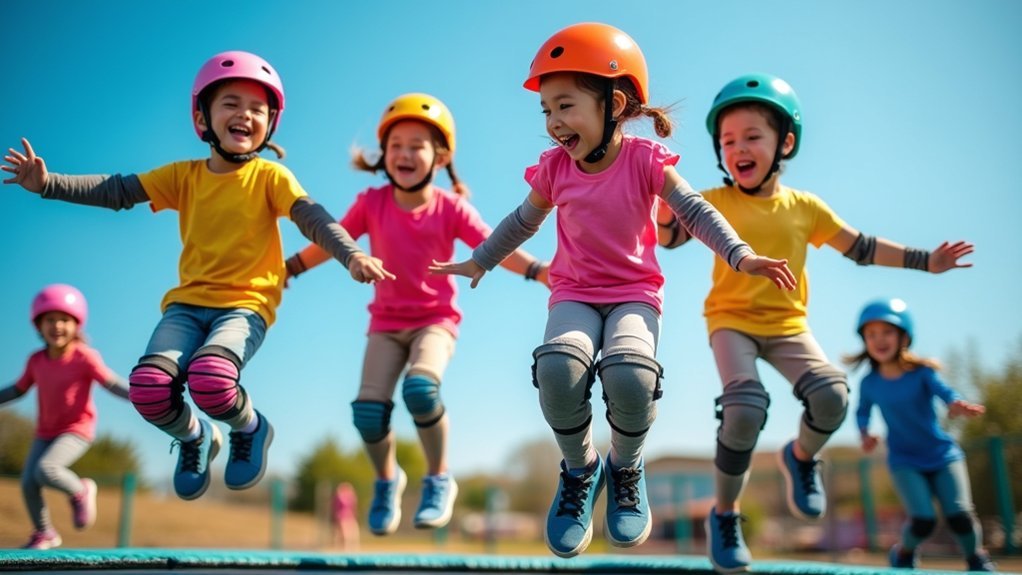
When children engage in bouncing activities, whether on trampolines, bounce houses, or other rebounding surfaces, proper protective equipment becomes essential for their safety.
To minimize the risk of injuries, equip your kids with multi-impact helmets meeting ASTM F1492 standards to protect their heads during unexpected falls.
Always have your children bounce with non-slip socks or bare feet to maximize grip and prevent dangerous slips.
For thorough protection, particularly for beginners, knee and elbow pads are vital safety additions.
Dress your kids in comfortable, non-restrictive clothing that won’t get caught during active bouncing.
Don’t forget to regularly check all protective gear for damage or wear—equipment in poor condition can’t properly safeguard your children during their bouncing adventures.
Essential Safety Gear for Trampoline Rebounding
When you’re setting up your child for trampoline fun, choose non-restrictive clothing and either non-slip socks or bare feet to maximize grip during jumps.
A properly fitted multi-impact helmet meeting ASTM F1492 standards offers essential protection, especially for kids attempting advanced maneuvers or tricks.
You’ll also want to take into account wrist guards and knee pads as supplementary protection against the inevitable bumps and falls that come with rebounding activities.
Proper Bounce Attire
Safety on a trampoline begins with what your child wears. Choosing appropriate clothing isn’t just about comfort—it’s an essential safety measure that prevents accidents.
Have your children wear non-slip socks or go barefoot to maximize grip and stability while jumping. Avoid loose-fitting garments that could catch in springs or netting during active bouncing.
For proper training and advanced maneuvers, consider these protective items:
- Multi-impact helmets for those attempting flips—protecting their developing brains from potential trauma
- Knee and elbow pads to shield against painful scrapes that might discourage continued activity
- Fitted clothing free from dangling accessories that could snag and cause dangerous falls
Regular inspection for wear and tear on all protective gear guarantees continued safety as your child develops their trampoline skills.
Helmet Safety Considerations
Among all protective gear for trampoline enthusiasts, helmets stand as the frontline defense against head injuries that can occur during bouncing activities.
When selecting a helmet, verify it meets CPSC or Snell safety standards to provide adequate protection during falls or collisions.
Proper fit is vital—a loose helmet won’t effectively protect your child’s head during trampoline use.
You’ll want to regularly inspect the helmet for cracks or wear that might compromise its protective capabilities.
Pediatric orthopedic surgeons particularly recommend helmets for children in competitive trampoline training to reduce concussion risks.
Remember that while helmets are essential protective equipment, they’re most effective when combined with adult supervision and adherence to trampoline safety guidelines.
This thorough approach creates the safest possible bouncing environment for your kids.
Age-Appropriate Protective Wear for Young Bouncers
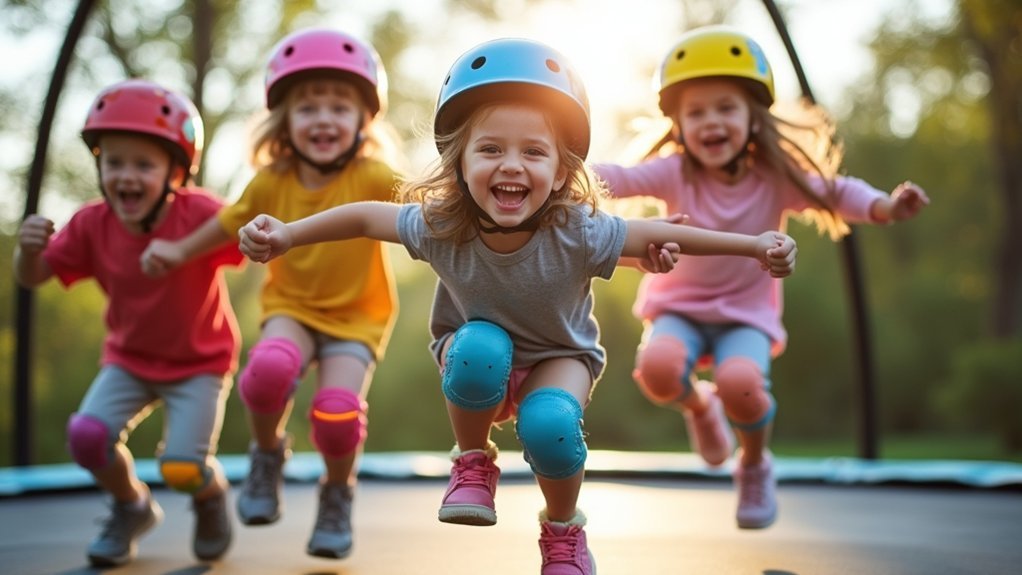
As children explore the joyful world of bouncing, they’ll need proper protective equipment that grows with their skills and confidence. For children aged 3-10, start with non-slip socks or specialized bouncing shoes that prevent injuries by providing essential grip during play.
As your child’s abilities advance, gradually introduce safety padding like knee and elbow pads to protect against falls and scrapes.
- Watch your little one’s face light up with confidence when they’re properly equipped to bounce safely
- Celebrate each bounce knowing you’ve taken smart steps to protect their developing bodies
- Experience peace of mind as your child develops coordination skills with appropriate protection
Remember that protective gear must fit properly to be effective. For younger children, helmets are particularly important, while more advanced bouncers may benefit from wrist guards during high-energy activities.
Non-Slip Footwear Options for Safe Jumping
When choosing footwear for your child’s bouncing activities, you’ll need to decide between specialized non-slip socks or allowing them to jump barefoot. Socks generally provide better grip and hygiene.
Grip-enhanced jump shoes offer superior traction and stability, making them ideal for trampoline parks that require specialized footwear for safety compliance.
You’ll want to guarantee whatever option you select fits properly, remains lightweight for easy movement, and maintains effective grip patterns that prevent dangerous slips while your child enjoys bouncing.
Sock vs. Bare Feet
The right footwear choice can greatly impact your child’s safety while bouncing on trampolines or in bounce houses. Non-slip socks are often the preferred option as they provide better grip on jumping surfaces, considerably reducing the risk of injury during active play.
While jumping barefoot is acceptable if the surface is clean and debris-free, specialized grip socks offer additional protection and warmth.
- Peace of mind knowing your child has proper traction when performing jumps and tricks
- Comfort and protection for little feet against cold surfaces and potential debris
- Compliance with facility rules that often require special socks for safe bouncing
Many trampoline parks require non-slip socks, so it’s worth investing in a pair for your child’s enjoyment and safety.
Remember to avoid shoes, as they can damage equipment and increase injury risks.
Grip-Enhanced Jump Shoes
Three key qualities separate grip-enhanced jump shoes from regular footwear when it comes to safe bouncing: specialized traction, lightweight flexibility, and targeted support. When your child is jumping, these shoes provide essential grip on bouncing surfaces, preventing dangerous slips during landings.
| Feature | Benefit | Why It Matters |
|---|---|---|
| Non-slip soles | Enhanced traction | Prevents dangerous falls |
| Lightweight materials | Better flexibility | Allows natural movement |
| Padded insoles | Comfort during use | Reduces foot fatigue |
You’ll notice improved balance and stability when your kids wear proper jump shoes instead of regular athletic footwear. The specialized design supports developing coordination skills while they enjoy bouncing activities. Remember that these shoes are specifically engineered for jumping surfaces, making them a worthwhile investment for your child’s safety.
Head and Body Protection During Bounce Activities

Safety during bounce activities starts with proper head and body protection for your child. A quality helmet meeting ASTM F1492 standards is essential to protect against head and neck injuries that could lead to concussions or worse.
Pair this with wrist guards to prevent broken bones during falls, and add knee and elbow pads for complete protective gear coverage.
- Your child’s developing brain deserves the best protection possible—a properly fitted helmet can make the difference between a minor bump and a serious injury.
- Watch their confidence soar when they know they’re safely equipped to try new bounce tricks.
- Avoid the heartbreak of preventable injuries by investing in quality protective equipment that grows with their skills.
Remember to regularly inspect all safety equipment for damage to maintain protection effectiveness.
When to Upgrade Safety Equipment for Advanced Rebounders
As your child’s bouncing skills advance beyond basic jumping to more complex maneuvers, their protective equipment needs evolve accordingly.
You’ll need to upgrade safety equipment when they begin attempting flips or somersaults, ensuring they’ve specialized harnesses and pads designed for these higher-risk activities.
Regularly inspect gear for wear and replace damaged items immediately. Consider investing in ASTM-certified multi-impact helmets when your child progresses to advanced techniques.
Monitor your child’s growth, as ill-fitting pads won’t provide adequate protection during intense bouncing sessions.
Always follow manufacturer guidelines regarding age and weight recommendations for safety equipment.
Most manufacturers specify when certain upgrades become necessary based on skill level and activity intensity, helping you make informed decisions that maximize protection while allowing your child to safely enjoy their developing talents.
Seasonal Considerations for Trampoline Safety Gear
While your child’s skill level determines appropriate protective equipment, the changing seasons also play a significant role in trampoline safety requirements.
You’ll need to adjust gear based on weather conditions to prioritize safety year-round. In winter, dress kids in layered, non-restrictive clothing that keeps them warm without limiting movement.
During summer, lightweight, breathable fabrics prevent overheating while jumping on trampolines or in bounce houses.
- Wet or icy surfaces increase the risk of serious injuries by 70%—always remove bounce houses and restrict trampoline use until dry conditions return
- Children of any age and size should wear non-slip socks or go barefoot for proper grip regardless of season
- Sunscreen and hats aren’t just comfort items—they’re essential protective equipment during sunny months
Frequently Asked Questions
Do You Need Socks for a Bounce House?
Yes, you’ll need socks for bounce houses. They’ll give you better grip, prevent slipping, and maintain hygiene. Most facilities require them. Opt for non-slip socks if possible for enhanced safety while you’re bouncing.
How to Keep Kids Safe on Trampoline?
Always supervise your children when they’re using a trampoline. Enforce one jumper at a time, ban risky stunts, regularly inspect for damage, and make sure kids wear non-slip socks or go barefoot while jumping.
Are Bounce Houses Safe for Kids?
Bounce houses can be safe with proper precautions. You’ll need to group kids by size, secure the structure properly, check for damage, avoid use during bad weather, and supervise closely to prevent injuries.
What Is Bouncing for Kids?
Bouncing for kids includes activities on trampolines, bounce houses, and inflatables that provide fun exercise. You’ll see benefits in your child’s physical fitness, sensory development, social skills, and cognitive growth through these playful jumping activities.
In Summary
Don’t compromise on your child’s safety when they’re bouncing. Always equip them with properly fitted helmets, impact-absorbing socks, knee and elbow pads, and mouthguards for complete protection. You’ll need to upgrade gear as they grow and develop new skills. Remember, the right equipment changes with seasons—lighter protection for summer, more coverage for cooler months. Prioritize safety today for worry-free bouncing tomorrow.
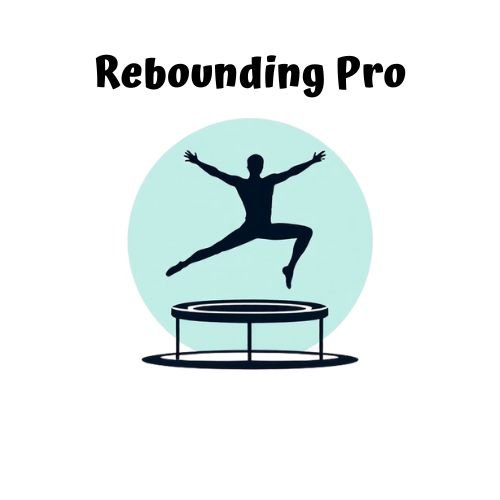


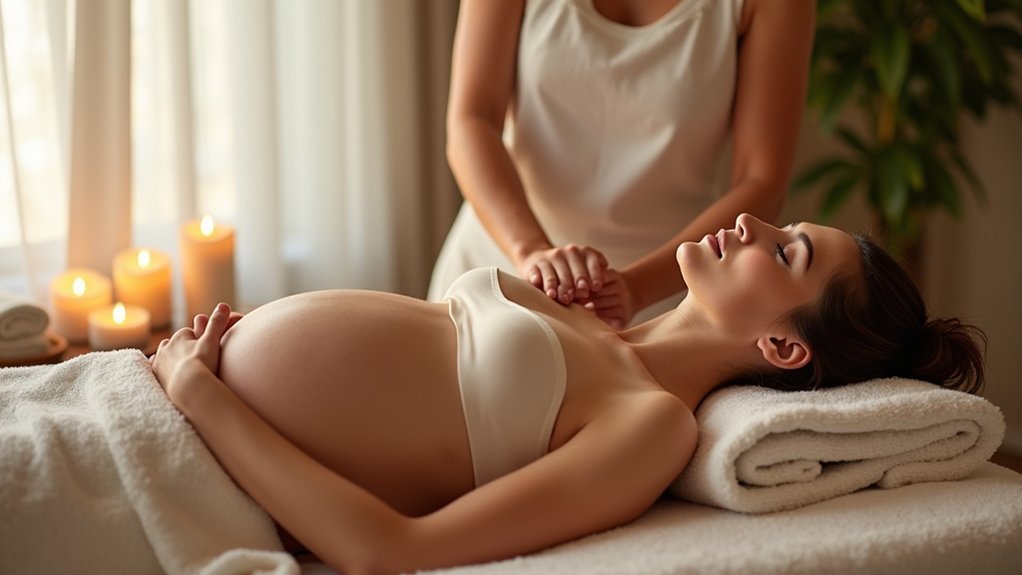
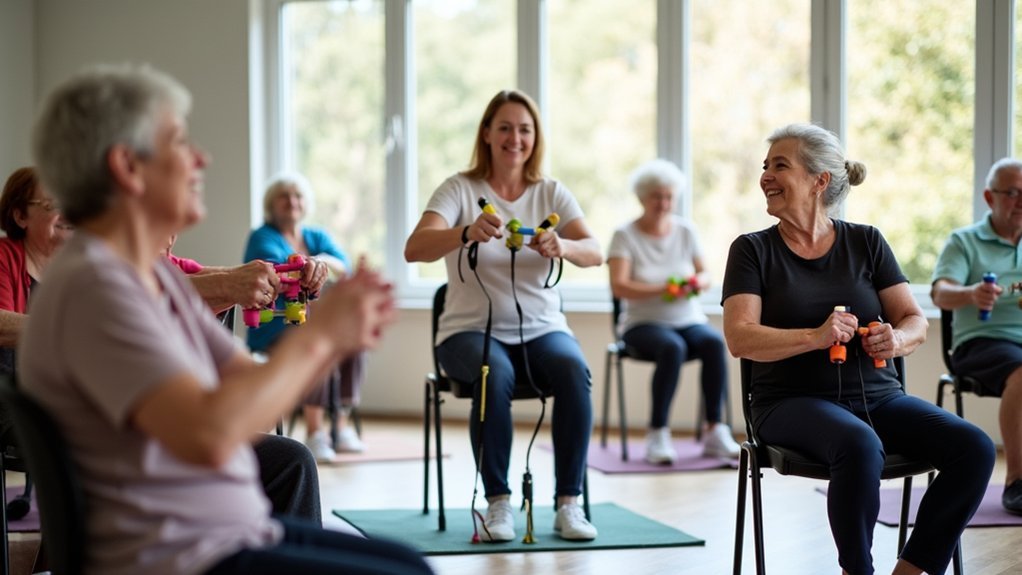
Leave a Reply